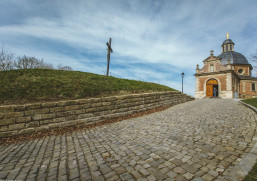The Jekyll and Hyde of Belgian Cycling
Ralph Waldo Emerson said never lose an opportunity to see anything that is beautiful. There is a moment of great anticipation that cradles the beauty of La Flèche Wallonne just before the first riders break the horizon 100 meters from the finish line on the top of the Mur de Huy. And while this moment brings elation for one, it is followed closely by the cruel despair of defeat for others, the defining space of victory that slips one step in front of defeat, the suspenseful animation that the television screen cannot define well enough the physical brutality that paves the Chemin des Chapelles. On the lower slopes of the Mur, the riders resemble foot soldiers, marching to seize Li Tchestia, the 1818 fortress that dominates the city, until the weaker are discarded and left behind, sacrificed as the effort of the assault rapidly deteriorates into a chaotic trampling of survival. Peering down the Mur, the bobbing heads of the leaders that first break the horizon seem to be lifted from below by the crescendo of cheering that ignites the climb. Their arched bodies, wrestling over their bikes as if trying to escape the strangling grip of a python, for a moment appear as if they’re rising, being pushed from below, pulled from above, the perspective downhill skewing and suspending their forward movement. The upheaval is staggering, and belies Emerson’s musings. While the beauty here, perhaps, is in the eye of the beholder, the cruelty of the Mur de Huy is brandished in sinister ways. Read more

